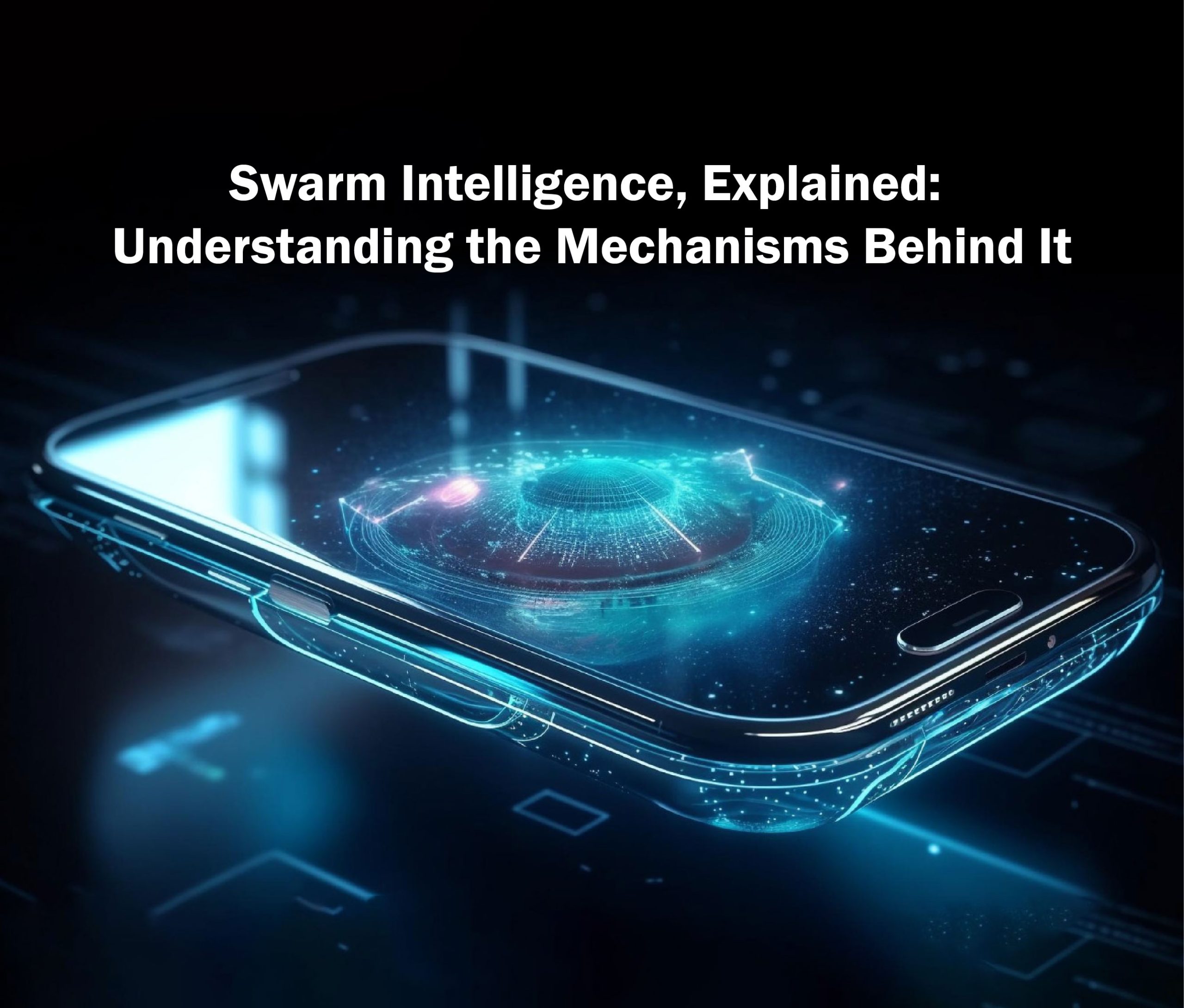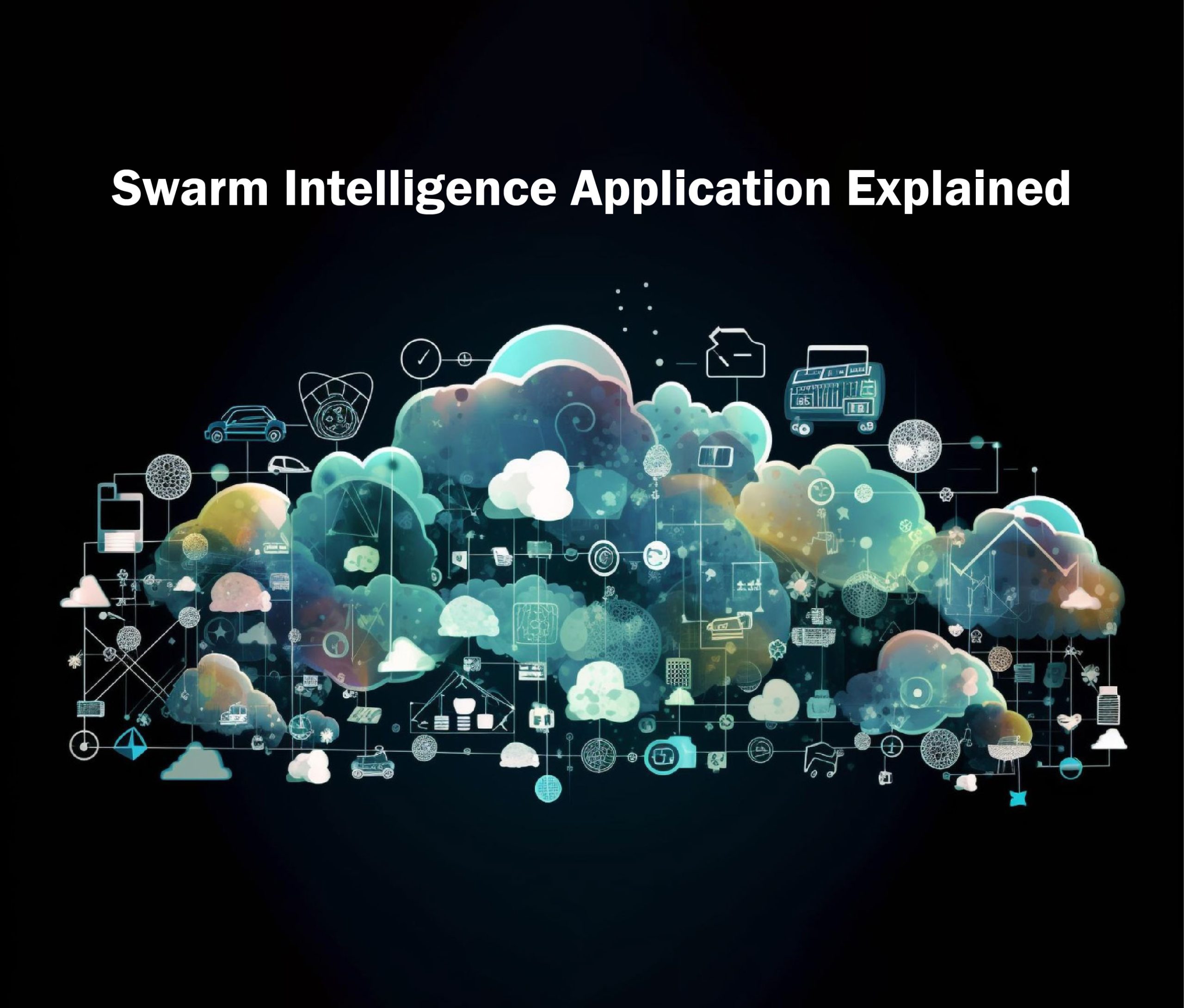Imagine a world where hundreds, thousands, or even millions of tiny creatures work together seamlessly, like a well-orchestrated symphony, to solve complex problems and achieve remarkable feats. This incredible phenomenon, known as Swarm Intelligence, draws inspiration from nature’s most organized collective behaviors and applies them to the realm of technology and problem-solving. Let’s understand further.
What is Swarm Intelligence?
Swarm Intelligence (SI) comes under the umbrella of Artificial Intelligence (AI) and is a computational technique employed to investigate and utilize the collective actions of decentralized and self-organized systems, aiming to solve problems through the implementation of algorithms inspired by nature. These systems consist of numerous uncomplicated agents that interact with both their surroundings and each other by following basic local rules.
The notion of Swarm Intelligence was initially introduced by entomologist Karl von Frisch during his investigations on bee behavior. He discovered that bees communicate by performing a behavior called the waggle dance, which enables them to exchange information regarding the whereabouts and quality of resources. This form of collective decision-making exemplifies the concept of stigmergy, which serves as the fundamental principle for SI.
Gerardo Beni and Jing Wang coined the term in their scholarly article titled “Swarm Intelligence: from natural to artificial systems”, published in 1989.
These agents, commonly referred to as “swarm members” or “swarmers”, possess the ability to adjust and collaborate through their interactions, which is how this group exhibits intelligent behavior as a whole. They draw inspiration from natural swarms like ant colonies, bird flocks, fish schools, and bee swarms, which work collectively to accomplish shared objectives and address challenges such as finding food, evading predators, and constructing nests.
In the swarm intelligence algorithm, it is important to note that the agents operate independently and without central control or coordination. The behavior of the system arises from interactions between these agents, making it highly robust and resilient. Even if some agents fail or exit the system, it can still function effectively. The main idea of SI is that the collective behavior of a group can surpass the intelligence of any individual member. This is due to the group’s ability to collectively explore numerous possibilities and discover superior solutions that an individual alone cannot achieve.
Swarm Intelligence, Explained: Understanding the Mechanisms Behind It
 SI systems are typically composed of a large number of simple agents that interact with each other and their environment in order to achieve a common goal. The behavior of the system as a whole emerges from the interactions between the individual agents and is often unpredictable and complex. These natural systems are able to solve complex problems, such as finding the shortest path through a maze, by breaking them down into smaller sub-problems that can be solved by individual agents working together.
SI systems are typically composed of a large number of simple agents that interact with each other and their environment in order to achieve a common goal. The behavior of the system as a whole emerges from the interactions between the individual agents and is often unpredictable and complex. These natural systems are able to solve complex problems, such as finding the shortest path through a maze, by breaking them down into smaller sub-problems that can be solved by individual agents working together.
SI systems are known for their decentralized nature, meaning that they lack a central authority or controller that prescribes their operations. Instead, every agent in the system is independent and relies on local information and straightforward principles to make decisions. This decentralized structure enables SI systems to exhibit excellent scalability and efficiency, as the addition or removal of agents has no significant impact on the overall system performance.
In the realm of systems intelligence (SI), agents are typically straightforward and uniform, engaging in local communication with each other and their surroundings. As a result of this interaction, emergent behavior often arises. Emergent behavior refers to patterns of behavior that do not stem directly from the actions of individual agents, but instead emerge from their interactions with one another.
SI algorithms typically consist of three primary elements in most cases.
- A group of potential solutions, known as particles, within a given population
- A fitness evaluation function is utilized to assess the proficiency of each particle in finding a solution to the problem at hand
- Particles engage in a form of communication or interaction to exchange information regarding the effectiveness of different solutions
Swarm Intelligence Application Explained
 SI has found practical applications in numerous fields, such as engineering design, computer science, and economics. It has proven to be valuable in solving a wide range of problems such as in UAV-aided wireless networks and has been successfully implemented in various domains.
SI has found practical applications in numerous fields, such as engineering design, computer science, and economics. It has proven to be valuable in solving a wide range of problems such as in UAV-aided wireless networks and has been successfully implemented in various domains.
SI finds considerable application in optimization problems, including function minimization, multimodal optimization, and data clustering. Optimization problems have numerous potential solutions, and SI is particularly effective in exploring and identifying the best possible solution from this vast pool of options. By leveraging SI, multiple solutions can be simultaneously obtained, with each successive solution surpassing the previous one in terms of quality.
Pattern recognition involves the skill to recognize patterns in data. This can be a difficult task for humans as we typically need to examine each data point in order to identify the pattern. However, one approach to simplify this process is through the use of swarm intelligence. SI can be applied to various tasks including classification, clustering, and prediction. To illustrate, it can be utilized to identify patterns within a company’s sales data and utilize this knowledge to make predictions about future occurrences and implement suitable measures.
SI has proven effective in controlling groups of robots across a variety of domains. By applying SI principles, robots have been successfully utilized in search and rescue operations, surveillance missions, and exploration endeavors. One notable application of swarm robotics involves the creation of low-cost, yet highly capable, robots that work together in swarms to accomplish complex tasks.
In this approach, the robots are equipped with simple programming based on basic rules and are released into an environment where they collaborate and communicate to complete assigned tasks. Through this communication, the robots not only exchange information, but also learn from one another, ultimately optimizing their performance and completing the task most efficiently.
Swarm intelligence simulations serve as a valuable tool for examining intricate systems, including social networks, economic markets, and ecological ecosystems. By employing this technology for simulation purposes, researchers gain insights into the collective behavior and decision-making processes of large groups. This approach enables scientists to explore various potential outcomes, aiding in the identification of solutions for addressing significant challenges confronting our society.
Predictive modeling is an analytical process that utilizes SI techniques to forecast future events. This technique is applicable across various domains, including healthcare, marketing, and finance, where predictive modeling plays a crucial role. By analyzing data and incorporating additional environmental factors, the SI algorithm makes informed decisions regarding future outcomes. Its effectiveness extends beyond industries in which predictive modeling is essential, making it a valuable tool with wide-ranging applications.
Winding Up
Swarm intelligence presents a captivating pathway, fostering innovation and tackling complex problems. It revolves around harnessing the principles of collaboration, adaptation, and emergence to unlock boundless realms of knowledge. By embracing these principles, we pave the way for a future where intelligence transcends the boundaries of individuals and thrives within the collective. So, let us eagerly embrace the tremendous potential of SI and embark upon a journey brimming with endless possibilities and discoveries waiting to unfold.


